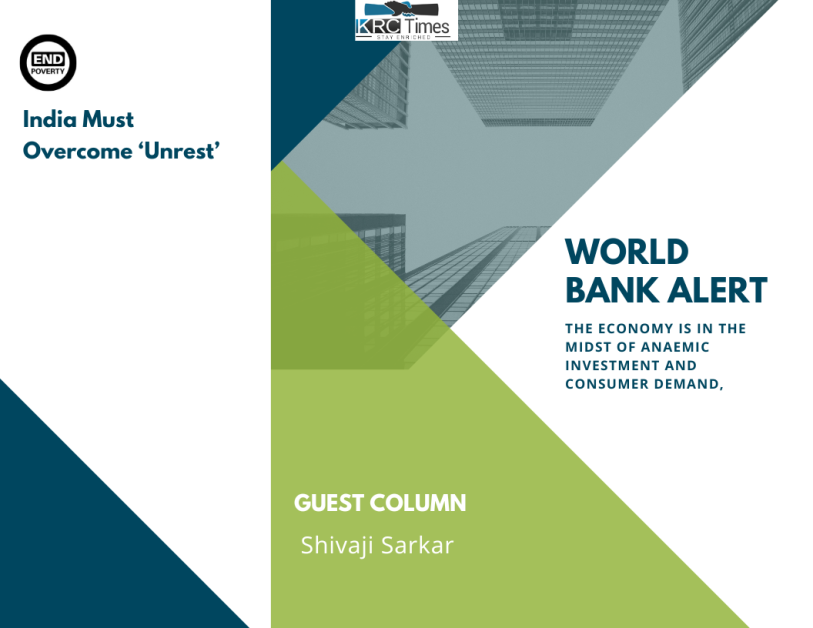Cash flows must start for these smaller informal units and they should regain their normal old rhythm of functioning

Dr Manmohan Singh, primarily an economist who was thrust into the position of a politician late in life, has offered sane advice to the Modi government to come out of the current economic crisis. In doing so, he was playing the role of a senior statesman.
His first advice is that the government must come out of its denial mindset and recognise that there is a full blown economic crisis. Dr Singh referred to his stint as finance minister and later as prime minister when the country was struck by severe economic storms in 1991 and subsequently in 2008.
By any measure, those were far more serious crises than the present one. However, during the first crisis when India was staring at an external payment default, the government led by Narasimha Rao had taken bold reform measures which set a new paradigm for the economy. By and large, we have moved in the direction set by the 1991 reforms ever since.
To my mind the while the reforms of the Narasimha Rao government introduced some fundamental changes in the way the Indian economy functioned, like introducing market-based exchange rate for the rupee or scrapping the 1956 Industrial Policy Resolution, which had reserved all key industries (like telecoms) for public investment exclusively, these were handled in a way which avoided large scale upheavals. Notwithstanding such reform measures, the general public was not harassed overnight.
While meeting Dr Singh at his North Block office well after election was announced and the outgoing government was in a kind of hibernation mode, as it happens, Dr Singh had confided that the biggest worry for the reformers was not to totally disrupt the Indian economy and bring untold misery to the people.
Dr Singh gave a long free-wheeling interview to this correspondent. India’s 1991 crisis was not then far removed from the devastating downfall of Soviet Union and abysmal collapse of its economy. The Russian reforms had taken a head-long plunge into making its economy completely market-based (in imitation of the West), suddenly unhinging itself from the command and planned one. This had created large scale unemployment, food shortages causing huge suffering for its common people. Its financial system had vanished and banks went bankrupt because the volley of reforms was introduced in too much of haste.
As I still recall, the perfect gentleman he was, he walked across the large room of the finance minister to see me off at the door. In the vein of rumination, he had said the reforms did not disrupt the rhythm of the Indian economy and had rehabilitated the sense of confidence from the beating it had suffered when foreign exchange reserves had dropped to bottom scrounging.
In a similar vein, Dr Singh’s emphasises to take a few critical steps to restore confidence. His advice is bipartisan and a sane voice for reconstruction of the economy. Dr Singh has given a five-point basic agenda of reform in his media interaction. What he had articulated is not so unknown but coming from him these suggestions assume a different hue. Admittedly, he has only given broad hints. The details will have to be worked out.
But there is one area which needs to be nurtured and prodded forward. Surely well-meaning, the bunch of measures in the last few years has in effect tried to touch a hitherto untouched segment of the Indian economy – the informal sector. The presumption was that the informal sector should be brought within the purview of the formal sector and thereby should be under the tax net though maybe not paying taxes. This meant these should be monitored.
The informal sector of the economy was the quintessential entrepreneurship of the people. In the numerous small and tiny units individual entrepreneurs specialized in doing small little things in the manner of assembly line functioning of large factories. In small side lanes in Delhi, for example, there are units which do nothing but stitch buttons on garments. And these could be very specialized buttons of fairly high end readymade garments. They do not come under tax obligation because neither their earnings nor their turnover qualify for tax threshold. But for that matter they are not illegal or their earnings are black money.
Introduction of GST discriminated against these cottage units because larger buyers in the supply chain preferred those having GST registration or tax returns.
It these units in their aggregate who props up employment and create the basic purchasing power. It is their employees who would go for aRs5-biscuit package. Along with the introduction of GST, the demonetisation done earlier, had hurt their cash flows. Digitisation was good for the big and organised, but not for these tiny units.
The government has to somehow help unwind the wires which had tied up the operations of the small and tiny units. Cash flows must start for these smaller informal units and they should regain their normal old rhythm of functioning.
We should recognise that the informal small sector is the primary cushion of the Indian economy. Their real contribution is difficult to measure and only vaguely sought to be estimated into the GDP calculations. But these amorphous unorganized individual-based economic units are the basic building blocks of Indian economy. Do not try to formalize them or seek taxes from these units.
(IPA Service)





